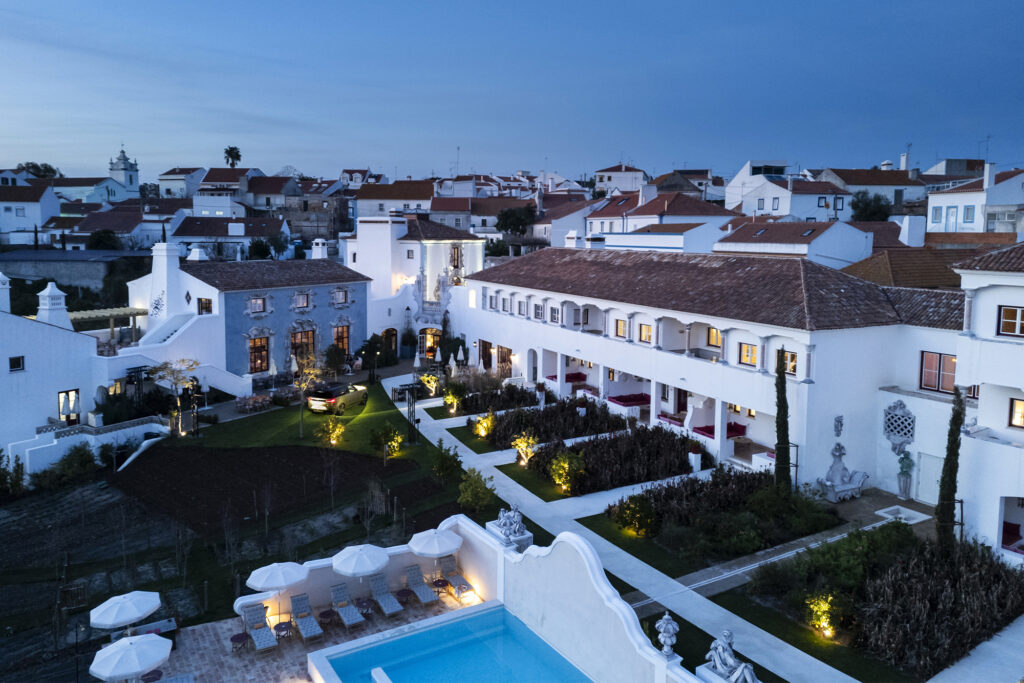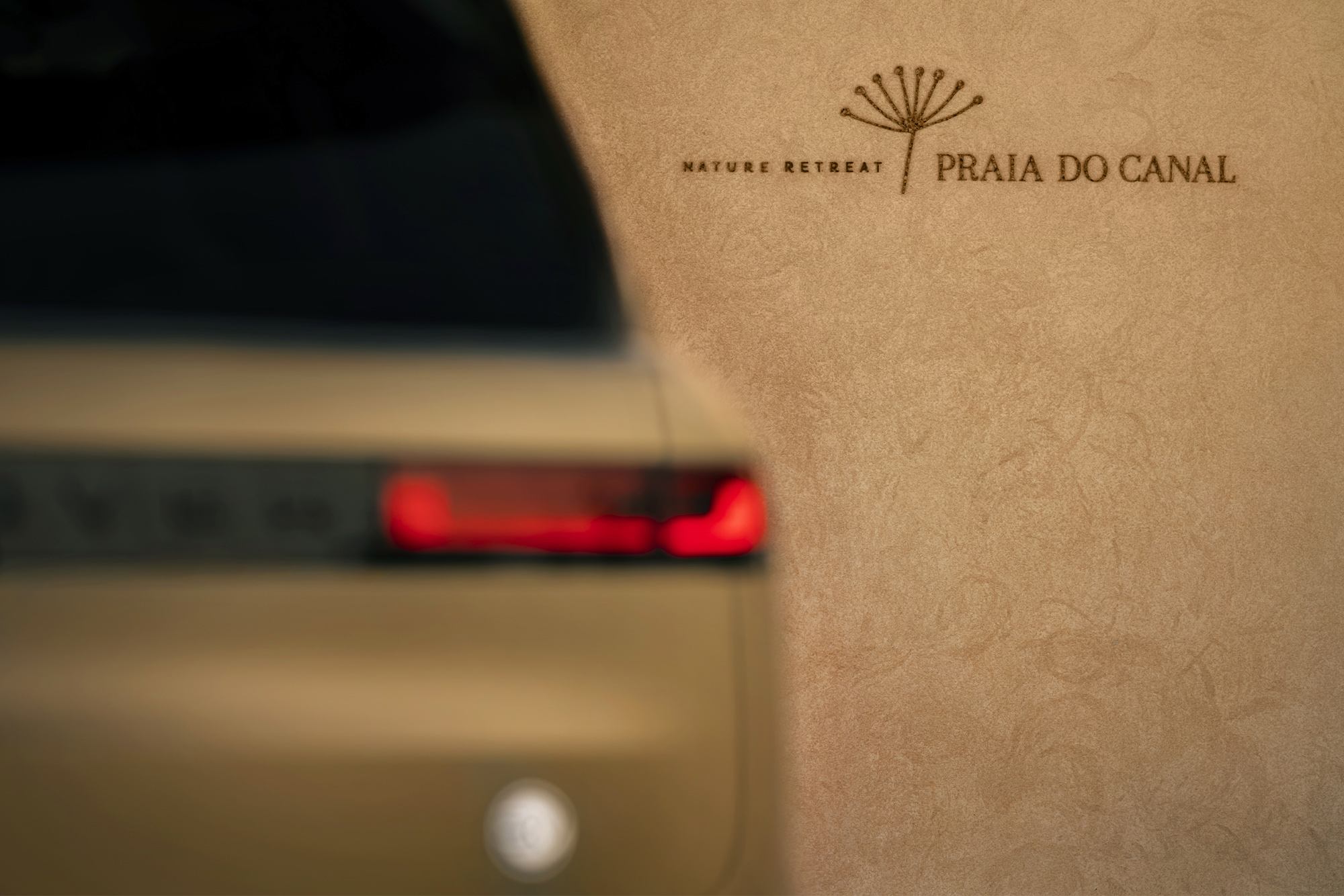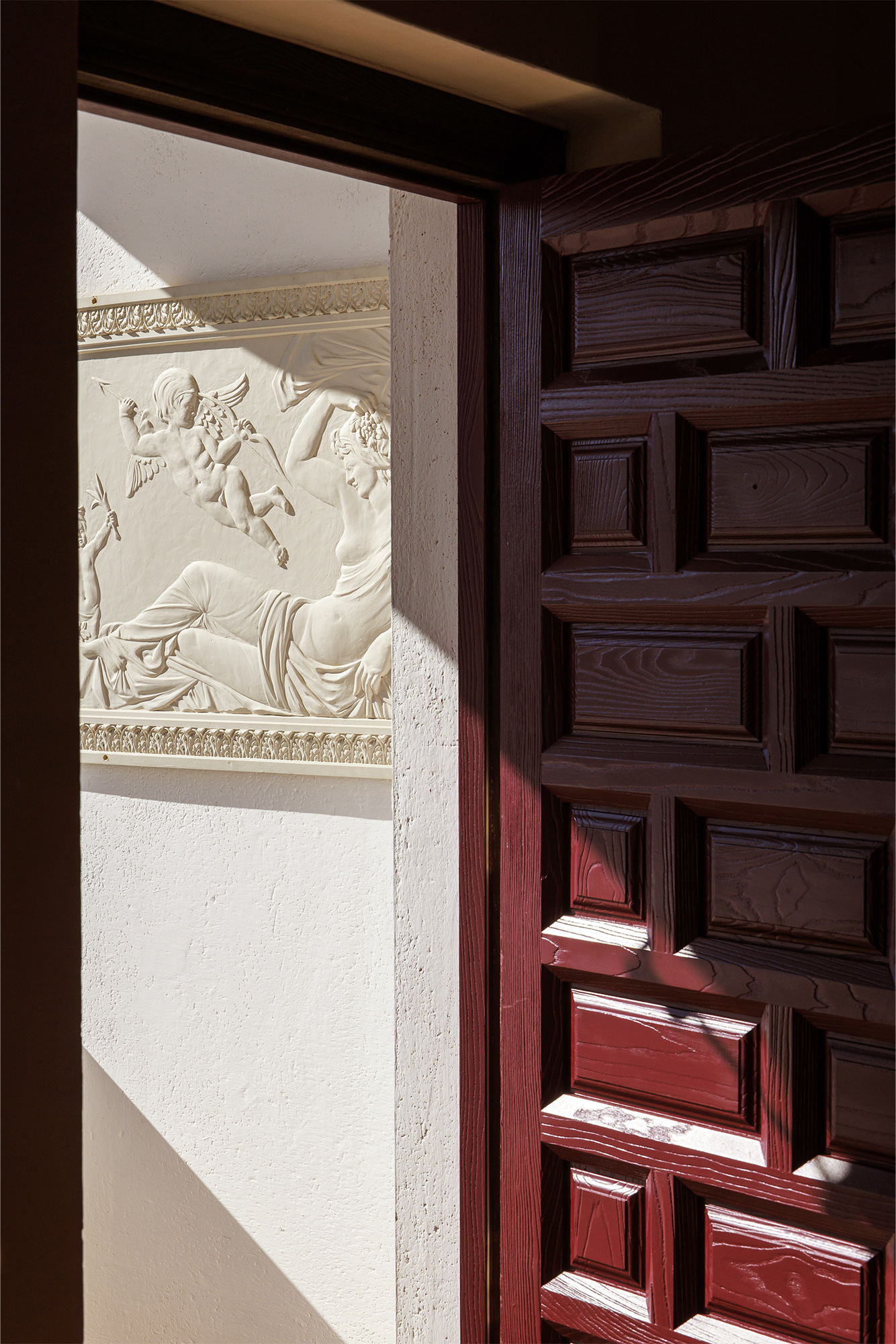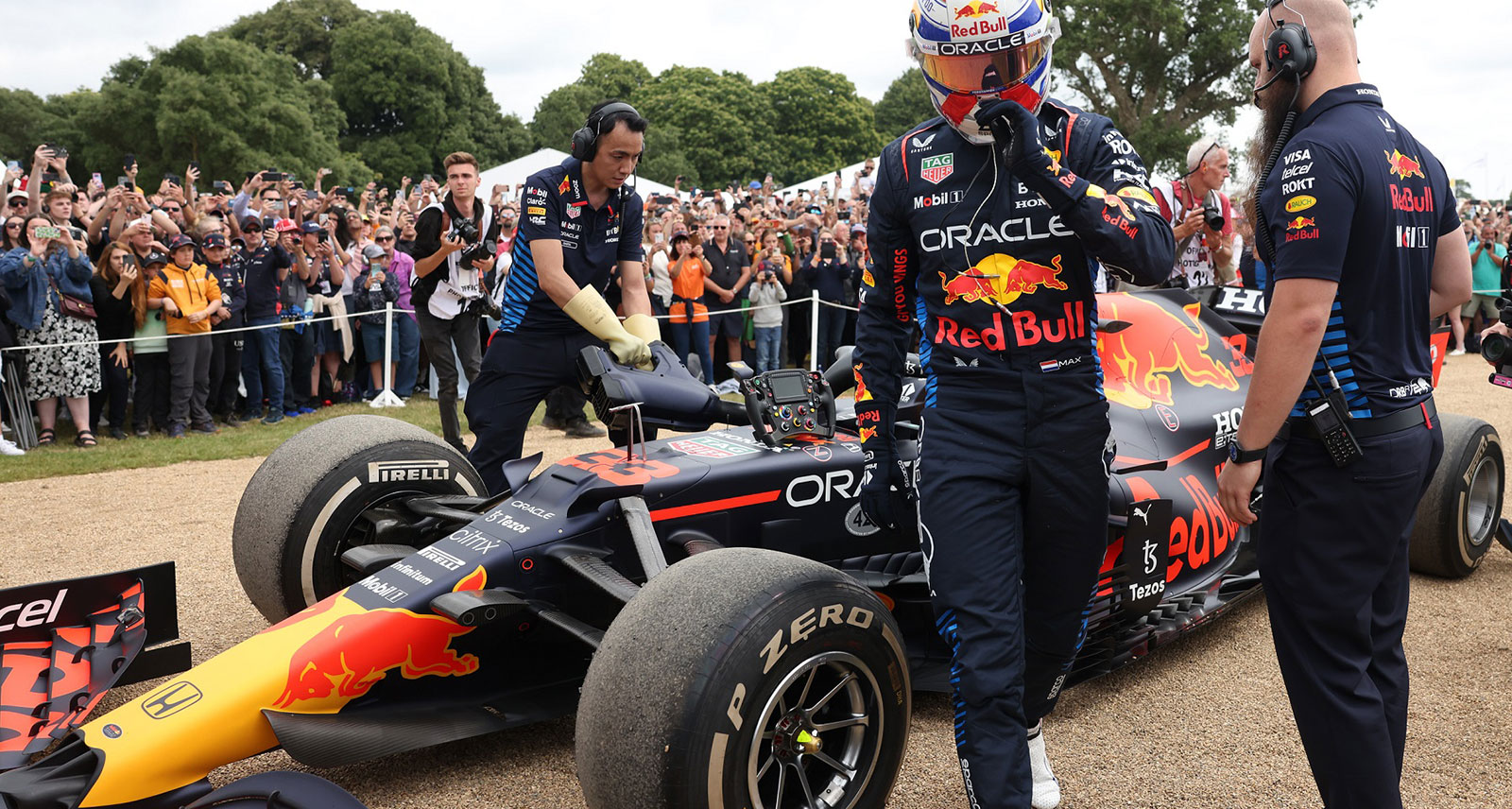Defying Physics
By this point in time, the idea of a high-performance SUV is not unexpected at all. In fact, right from the early days, when utility vehicles began to appear on our streets in greater numbers, the engineers working for various manufacturers have done their level best to defy the laws of physics.
Example: When the first Porsche Cayenne appeared, way back in 2002, launch videos showed the vehicle’s immense capability on all sorts of surfaces — pavement, gravel, snow and sand. At the time, some critics wondered what the point was; why engineer a vehicle with such an incredible breadth of capability? Especially when said capability was far beyond what the vast majority of Cayenne owners would require on any given day?
Those critics had a point back then — and their words still ring true. The same “breadth of capability” debate remains active as manufacturers push the edge of the envelope beyond the limits of adhesion. The latest vehicle to enter the conversation, the 2024 Range Rover Sport SV, reignites the discussion and potentially adds an exclamation point on the end. Or maybe a triple exclamation point. Or, possibly, an exclamation point, a few question marks and a stack of symbols used to replace swear words.
What’s with all the punctuation?

Well, in a motoring landscape filled to the brim with high-performance SUVs, the Range Rover Sport SV still manages to be unexpected. This derives from the Land Rover brand identity, the insistence that every vehicle produced can scale the nearest mountain with the greatest of ease. If you layer on top of this the capability to battle with Porsches — not Cayennes, but 911s — at your local racetrack, the end result is the most powerful Range Rover ever.
Here are the numbers.
The Range Rover Sport SV is powered by a twin-turbocharged 4.4L mild hybrid V-8 that generates 626 horsepower and 553 lb-ft of torque. The horsepower figure is up 60 compared to the vehicle’s predecessor, the SVR; the torque is increased by 37 lb-ft. According to the manufacturer, with the launch control system engaged and optional lightweight parts fitted (more on this later), the SV will rocket to 100 km/h in 3.7 seconds. Top speed is a verified 290 km/h.
But this particular high-performance SUV is not obsessed with just straightline speed. For proof of that fact, the braintrust at Land Rover secured a venue with a nearly one-kilometre start/finish straight and some high-speed turns, the Autódromo Internacional do Algarve in southern Portugal. It’s the kind of plan a mad genius might hatch. The reason: This Range Rover weighs as much as a Cadillac Escalade and, if you see a Cadillac Escalade on a ractrack, it’s because the navigation system has gone haywire.
A powerful V-8 is not the only weapon in this sport utility’s arsenal — far from it. The mighty SUV also features a trick air suspension system that’s engineered to keep the vehicle on a more even keel during cornering, heavy braking and acceleration. Presented as being a world’s first, the semi-active system called 6D Dynamics combines height-adjustable air springs, interlinked dampers and pitch control software.
The system does away with the need for anti-roll bars and represents a weight savings over a more traditional suspension system, an especially important consideration for a track-worthy SUV. The Sport SV rides between 10 and 25 mm lower than other current Range Rover models, yet still manages to offer comparable off-road capability.




Other features include all-wheel steering, brake-activated torque vectoring, an active locking rear differential, 305-mm rear tires (20 mm wider than the fronts) and a full-time all-wheel drive system. It’s actual sleight of hand, the way the engineering team has crafted a solution that makes this SUV feel equally at home on-track and off-road.
There’s other trickery at play here.
The Range Rover Sport SV Edition One, the limited-production launch edition we tested, sports the world’s first 23-inch carbon fibre wheel package. These wheels save up to 76 kg in weight, a key consideration in a vehicle this size, and help create sharper handling properties. The hood is constructed of carbon fibre and aerodynamically sculpted to aid performance.

Last but not leased (pun intended), there’s the optional carbon ceramic brake package, which slashes another 34 kg compared to the standard cast iron discs. This braking system isn’t just lightweight, it’s innovative. Engineered in partnership with Brembo, the system also features unique eight-piston Octyma front calipers — they’re the size of small barbecues.
Despite having full confidence in the veracity of the manufacturer’s press releases, driving the Range Rover Sport SV on an undulating, intimidating, high-speed racetrack still requires a leap of faith or two. Example: When powering down that nearly one-kilometre start/finish straight, you can wait until you spy the 150-metre board in your peripheral before lighting those small barbecues. There’s plenty of run-off area in certain parts of the track, turn one included, but some courage and/or senselessness prove helpful.


Turn one is not the only area of concern. The track also features a pair of blind turns. If your Escalade-sized vehicle is on the wrong side of the track approaching these turns, you’re going to be defying the laws of physics trying to bend it back into line. There’s also a high-speed, off-camber final corner that makes you question your very manliness or womanliness, as the case may be.
In just four laps driven in anger, it’s clear that the Range Rover Sport SV is a different kind of animal. It’s so intimidating, there’s just not enough time to build any sense of familiarity; no opportunity to determine precisely when it will run out of capability. So, to gain a better sense of its true limits, I enlist chief engineer Matt Becker, formerly of Aston Martin and Lotus, to play the part of chauffeur.

Becker joined Land Rover two years ago, three years after the engineering team began developing the Range Rover Sport SV. But he’s spent plenty of time applying the finishing touches—and he clearly knows the vehicle well. So well, in fact, he drives the thing as if it’s a scale model. Becker tosses the Edition One into the final corner with glee, fish-tails the thing through the corner, then hammers it down the start/finish straight.
The forcefulness of the acceleration is so prodigious, I can’t wrench my head sideways in the passenger enough to see what speed Becker hits before turn one. It’s a lot of speed, though, that’s fore sure. Then, into turn one, he doesn’t utilize full braking power, choosing instead to drift the Sport SV through the corner and well into the run-off area. The last time I saw someone perform this trick on this track, it was former DTM champion Bernd Schneider and he was piloting a Mercedes-AMG GT R.
Another half-tour and the thrill ride is over. It’s not that Becker is concerned about the brakes fading on the Sport SV — nor anything else going wrong for that matter — it’s a timing issue. He was having a blast, driving fast and proving the Range Rover Sport SV is a genuine track monster all at the same time.
The 2024 Range Rover Sport SV Edition One is a bold assault for a brand that’s better known for its off-road credentials. It’s not the first high-performance SUV the company has produced, but it’s easily the very best. Here’s the rub, though: All 600 examples of the Edition One are spoken for, so our only choice is to wait and see what the 2025 model year brings with it.

Away from the track and the trail, the 2024 Range Rover Sport SV Edition One is an exceedingly comfortable ride. Visibility is top-notch, there’s space for five passengers and decent cargo room. All things considered, the SV has the capacity to be a relaxing family vehicle… provided you stay away from the SV button on the steering wheel.
In addition, under normal circumstances, 23-inch wheels would present a challenge to ride quality — but the 6D Dynamics system meets the challenge and more. The relaxed feeling behind the wheel is further reinforced by the Body and Soul Seat.


This is a world’s-first design, developed in partnership with SUBPAC, a Canadian music technology company. The design incorporates transducers into the front seats, which allow the driver and co-driver to feel the bass notes emanating from the 29-speaker, 1430-watt Meridian audio system. This unique audio experience is, of course, entertaining, but it also provides health benefits, including relief from fatigue and stress on long road trips.
We have ample opportunity to test out the seats on the launch event, as we piloted the Edition One from Lisbon to Melides, a largely agricultural area to the south, and then on to Aljezur in the Algarve. All told, it’s a close-to-250-kilometre route, north to south, but it’s well worth the drive. The vehicle is super-comfortable, as noted, and the stopovers are distinct and memorable.
Our starting point, the Ivens in Lisbon, is a mere 500 metres from the iconic Santa Justa Lift in the heart of the city. It’s also within walking distance of the National Museum of Contemporary Art and the waterfront. The hotel itself features a raucous design — plenty of life, plenty of colour — and the vibrant Alma restaurant is a two Michelin star focal point that draws the in-crowd from Lisbon and the surrounding area.
Cut from the same cloth as the Ivens, Vermelho is a cultural touchpoint in an otherwise unlikely destination. This 13-room boutique hotel is the first such project for famed shoe designer Christian Louboutin, who spent winters in the region for years. The place is a hotel and art space rolled into one; traditonal Portuguese tilework features strongly, as does the work of Italian sculptor Giuseppe Ducrot, frescoes by Greek artist Konstatin Kakanias and lighting by Indian design firm Klove Studio.


While the Praia do Canal is no less exclusive than the Ivens or Vermelho, it takes a different route. Situated on a 220-hectare nature preserve close to the Vicentine Coast, its buildings are brutalist by design, similar to Aman outposts around the world, such as Amangiri in Utah. The rooms are spacious and serene. Ground-level suites feature peaceful garden terraces, while upper-level rooms offer superior views of the property. The on-site spa features saunas, a Hamman steam room, an infinity pool and an ice-water plunge tank.

















































